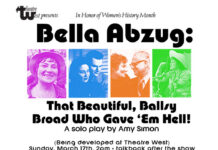The Marvels
By Gordon Meyer
Let me start by admitting I’m a big fan of the Marvel Cinematic Universe (MCU). I love the way producer Kevin Feige has masterminded a world where all the Marvel heroes and villains co-exist and often interact. I also really enjoyed both the Disney + series “Ms. Marvel” and the theatrical feature, “Captain Marvel.” Both origin stories are compelling and very human drama. This is why I was really looking forward to seeing “The Marvels,” where both heroes, the adult Captain Marvel and the teenage Ms. Marvel, who idolizes the latter, would meet and work together.
I’m sorry to say it was a mixed bag. Yes, it had its moments. Pakistani/Canadian actress Iman Vellani embodies the innocence and passion of a teenage girl who also sees a higher purpose for herself in life, but must balance that with having (as much as possible) a “normal” life as a teen, living in Jersey City with her strict, Pakistani immigrant parents and older brother. I liked the way her relationship with her family is portrayed and expanded on from our initial introduction to them in the six part mini-series which premiered on the Disney + streaming service in the summer of 2022.
While embracing the characters’ Pakistani and Muslim heritage, the parental/child dynamics were universal as the teen, Kamala Khan seeks to find herself first, just as a teenage girl dealing with all the usual things teenage girls deal with growing up, but complicated by her newly discovered heritage as someone with super powers that she’s just learning to accept and control. In this movie, while both her father (Mohan Kapur) and mother (Zenobia Shroff) have prominent roles, it’s really Shroff who stands out as Kamala’s doting and sometimes over-protective mother.
Brie Larson reprises her role as Carol Danvers, aka Captain Marvel, an US Air Force pilot who got superhuman powers when, during a mission, she was exposed to a source of cosmic energy and ultimately transformed into to a hybrid human/extraterrestrial when she received a blood transfusion from a race called the Kree.
Dar-Benn (Zawe Ashton) is the leader of the Kree empire, seeking revenge against Captain Marvel, who the Kree now refer to as the Great Annihilator, because, in her desire to help the Kree people, Captain Marvel ends up making their home planet almost uninhabitable. Dar-Benn uncovers a wrist bangle on a planet that’s the twin of the bangle which gives Kamala Khan her powers and uses it to wreak havoc on the galaxy. With me so far? Trust me. It gets more convoluted. That being said, I did like the way Dar-Benn was depicted, not as a black and white villain, but rather as someone who saw herself as a hero and a savior to her people. Like many of the best villains in both fiction and history, she is someone who, consumed with her mission, regardless of how it affects millions of other people, is a more complicated character.
Somehow, because of the way Dar-Benn has altered the fabric of space, now Kamala Khan, Carol Danvers and Monica Rambeau, a woman that Danvers knew as a child and who now has superpowers of her own, magically change places with each other any time one of them uses their powers.
I found the screenplay, written by director Nia DaCosta, Megan McDonnell and Elisa Karasik, to often be confusing, mainly because, in order to really understand much of what was happening, you had to have seen “Captain Marvel,” “Ms. Marvel” and the Disney + series “WandaVision” where the character of Monica Rambeau is introduced. Although I had seen all three entries into the MCU, I had forgotten much of the backstory from those titles. I suspect that anyone seeing “The Marvels” without having recently seen the other titles would find themselves even more confused than I was.
The movie definitely has its moments. And director/co-writer DaCosta handles the action sequences well. But the Carol Danvers/Captain Marvel character often comes off as two dimensional and the story is often hard to follow. I saw it in 3D IMAX and though the stereoscopic conversion was well done, it didn’t enhance the storytelling the way, as an example, James Cameron’s Avatar franchise so effectively uses 3D technology as a storytelling tool.
It’s not as terrible a movie as some have claimed. Having a trio of empowered women as the heroes and another woman as the villain was certainly a good step for the MCU. Hopefully the trio of Danvers, Khan and Rambeau will be seen again in future MCU adventures that are better written. Meanwhile, in spite of its flaws, I was entertained.
Score B-









